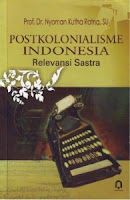A Pathway of Elements for An Ideal Lesson
 |
| Photo: M Nurul Ikhsan Saleh |
I have a plan to
teach the course of Peace and Conflict Resolution for the Master Program in
Indonesian universities. One of the significant pedagogical elements for the
success of my teaching in this course will be the provision of objectives based
on six levels of cognitive knowledge such as knowledge, comprehension,
application, analysis, synthesis, and evaluation guided by Bloom’s Taxonomy (Marzano & Kendall, 2006, p. 5). Bloom’s Taxonomy provides a
schema to classify objectives, educational goals, and standards (Krathwohl, 2002, p. 218). Some affective domains of
Bloom’s Taxonomy are receiving phenomena, responding to phenomena, valuing, organizing
values and internalizing values.
Regarding the appropriate
strategy for the learning process in this course, I will use Problem Based
Learning (PBL) which is a learner-centered approach (Savery, 2015, p. 5). This framework supports students to engage in
solving real-life problems. It is essential to implement PBL in online
environments that provide group processing and collaborative learning, building
a sense of learning community by using multimedia. The use of multimedia brings
beneficial effects in PBL for students in having an ability to detect symptoms,
signs, or behaviors through audio, visual, or tactile senses (Hung, Jonassen, & Liu, 2008, p. 500).
In addition, engaging
students in the teaching and learning process from pre face-to-face, to face-to-face,
and post face-to-face activities is pivotal to integrate with online learning
as a way to be blended learning in order to achieve the learning objectives (Garrison & Kanuka, 2004, p. 96). Therefore, for pre
face-to-face activities, students have to pre-read of the chapter in the text
book, watch a recommended video on Youtube, and do online quizzes through the university’s
online learning portal. In face-to-face learning activities, students will work
on a case study in a group related to the previous reading material in pre
face-to-face activities. Then students will receive clarification, feedback,
and evaluation by me in post face-to-face activities.
Overall, to
engage students, and provide an objective, a good strategy for the learning
process, as well as feedback and evaluation are a pathway of elements for the
ideal lesson.
References
Garrison, D. R.,
& Kanuka, H. (2004). Blended learning: Uncovering its transformative
potential in higher education. The
Internet and Higher Education, 7(2), 95-105.
Hung, W.,
Jonassen, D. H., & Liu, R. (2008). Problem-based learning. Handbook of research on educational
communications and technology, 3, 485-506.
Krathwohl, D. R.
(2002). A revision of Bloom's taxonomy: An overview. Theory into practice, 41(4), 212-218.
Marzano, R. J.,
& Kendall, J. S. (2006). The new
taxonomy of educational objectives: Corwin Press.
Savery, J. R.
(2015). Overview of problem-based learning: Definitions and distinctions. Essential readings in problem-based
learning: Exploring and extending the legacy of Howard S. Barrows, 9, 5-15.


Komentar